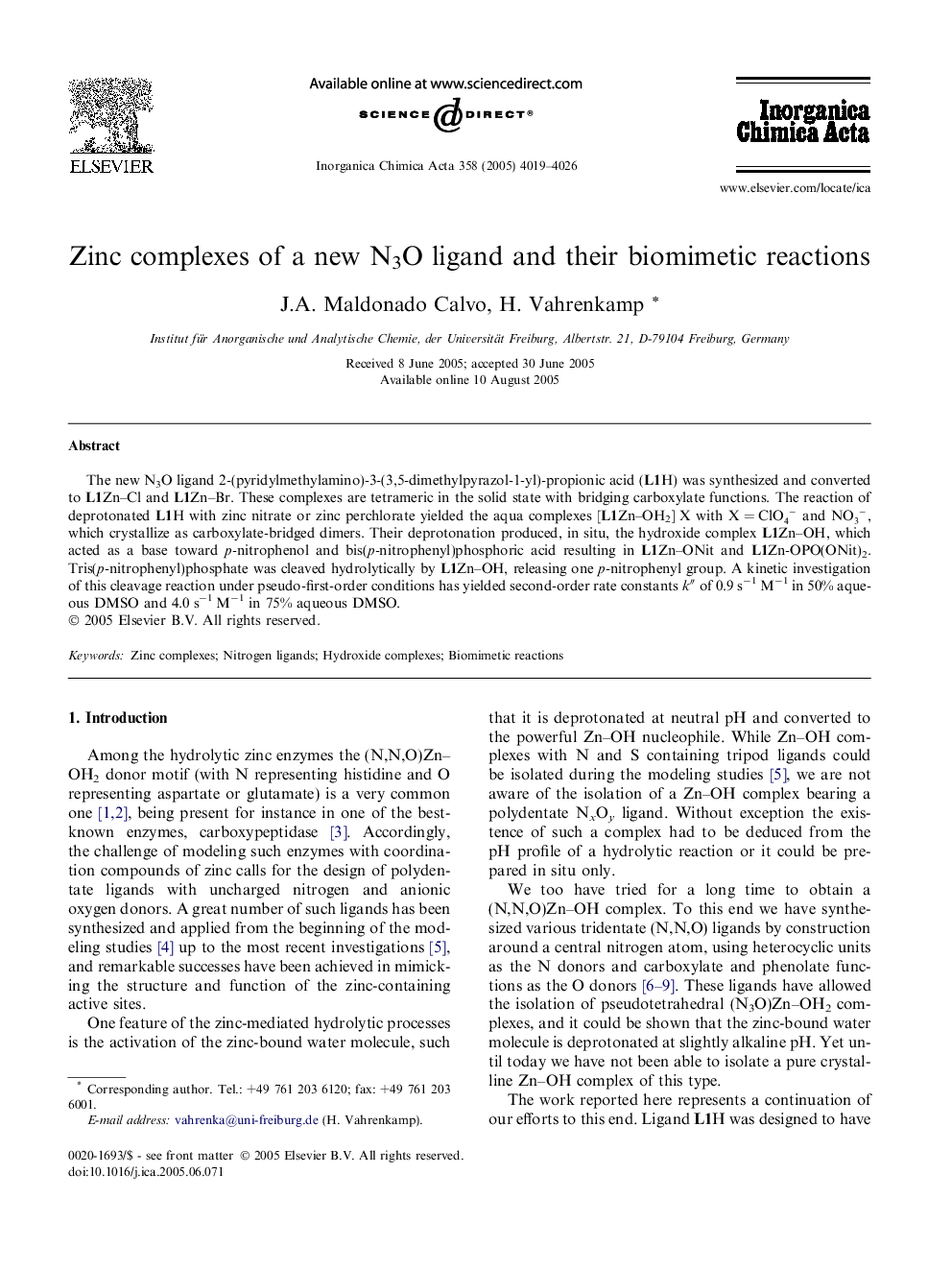| Article ID | Journal | Published Year | Pages | File Type |
|---|---|---|---|---|
| 1311851 | Inorganica Chimica Acta | 2005 | 8 Pages |
The new N3O ligand 2-(pyridylmethylamino)-3-(3,5-dimethylpyrazol-1-yl)-propionic acid (L1H) was synthesized and converted to L1Zn–Cl and L1Zn–Br. These complexes are tetrameric in the solid state with bridging carboxylate functions. The reaction of deprotonated L1H with zinc nitrate or zinc perchlorate yielded the aqua complexes [L1Zn–OH2] X with X=ClO4- and NO3-, which crystallize as carboxylate-bridged dimers. Their deprotonation produced, in situ, the hydroxide complex L1Zn–OH, which acted as a base toward p-nitrophenol and bis(p-nitrophenyl)phosphoric acid resulting in L1Zn–ONit and L1Zn-OPO(ONit)2. Tris(p-nitrophenyl)phosphate was cleaved hydrolytically by L1Zn–OH, releasing one p-nitrophenyl group. A kinetic investigation of this cleavage reaction under pseudo-first-order conditions has yielded second-order rate constants k″ of 0.9 s−1 M−1 in 50% aqueous DMSO and 4.0 s−1 M−1 in 75% aqueous DMSO.
Graphical abstractThe new N3O ligand 2-(pyridylmethylamino)-3-(3,5-dimethylpyrazol-1-yl)-propionic acid (L1H) forms oligomeric zinc complexes. Of these, the cationic L · Zn(OH2) can be deprotonated in situ to L · Zn–OH, which hydrolyzes tri(p-nitrophenyl)phosphate in a second-order reaction.Figure optionsDownload full-size imageDownload as PowerPoint slide
